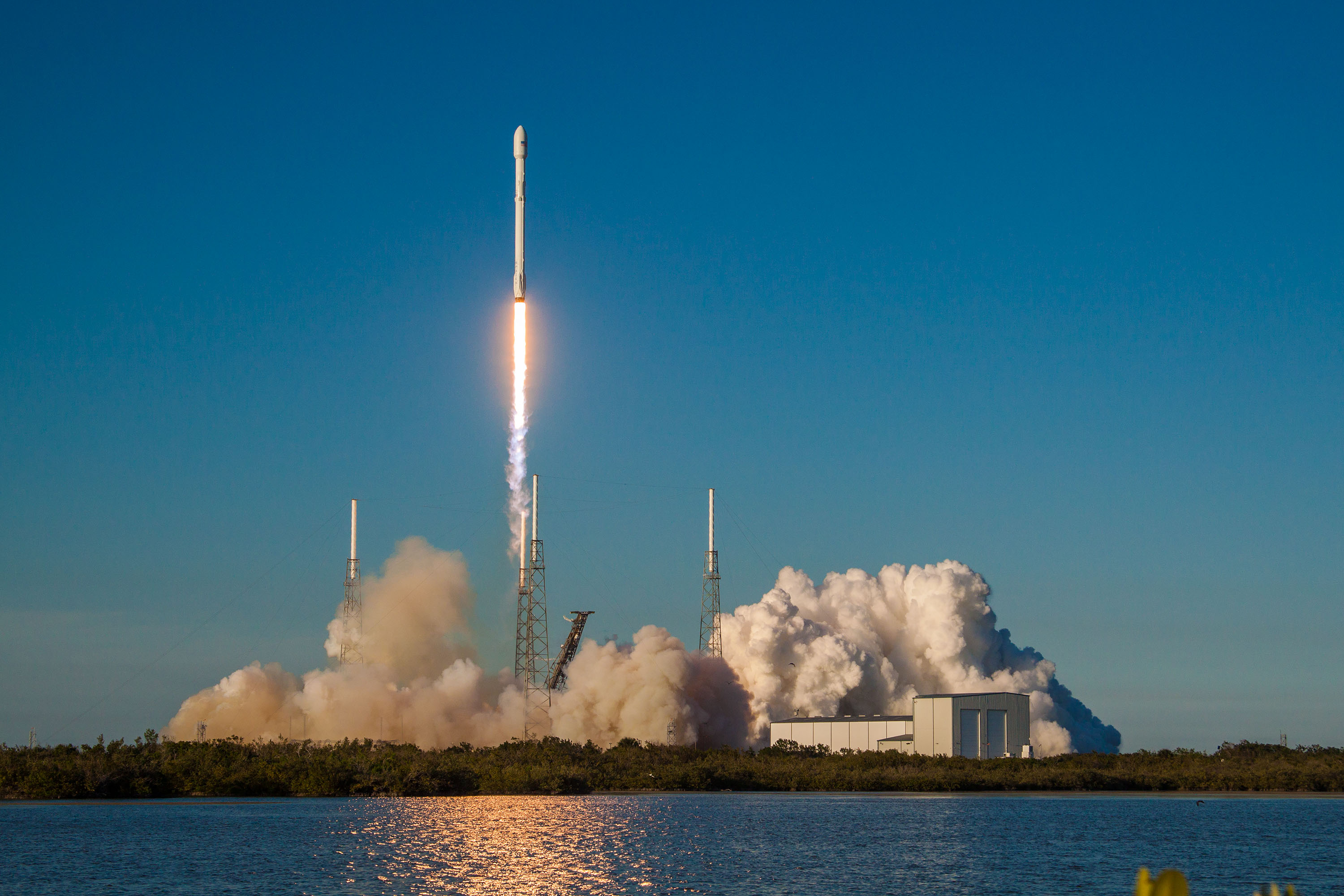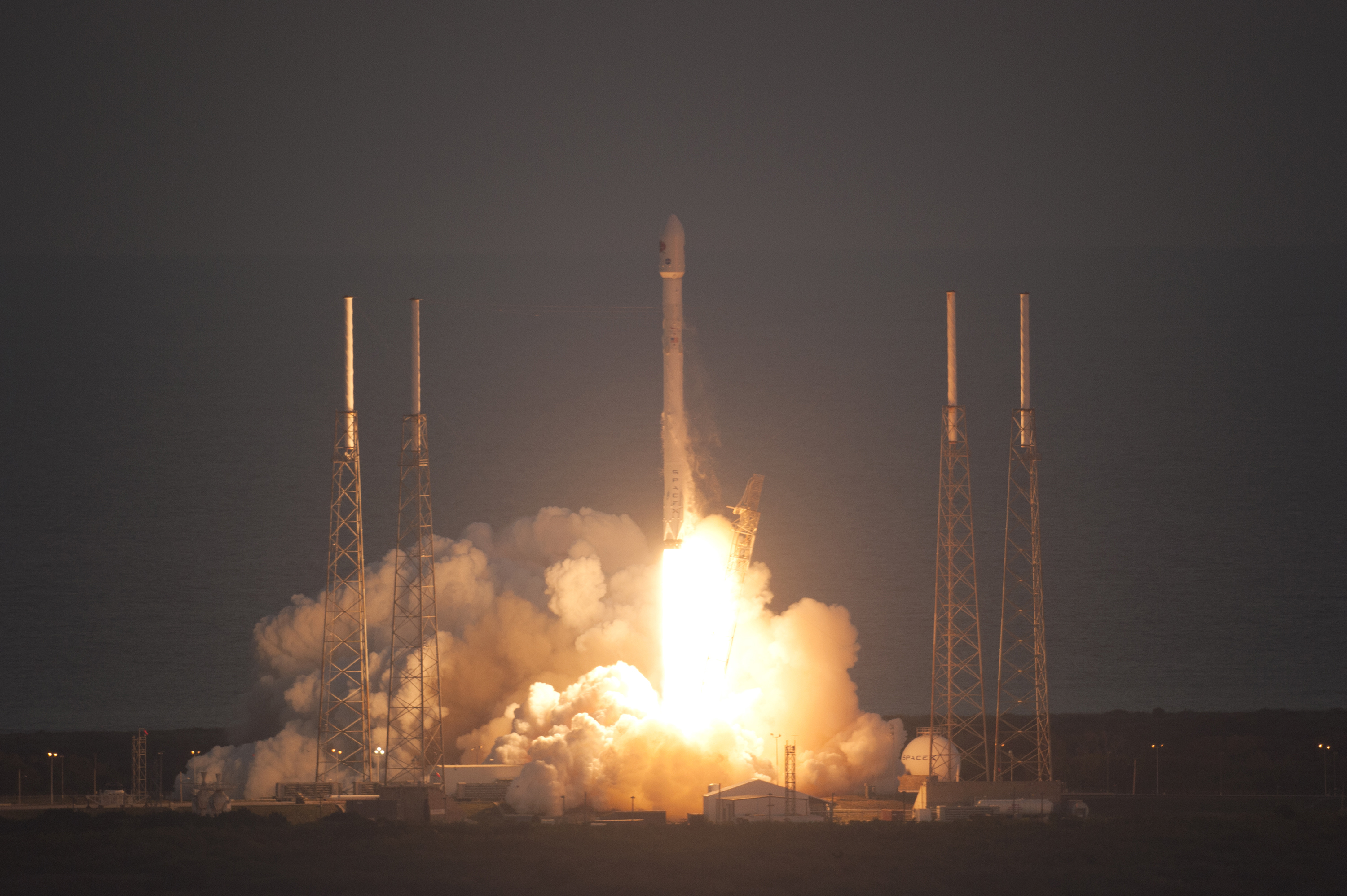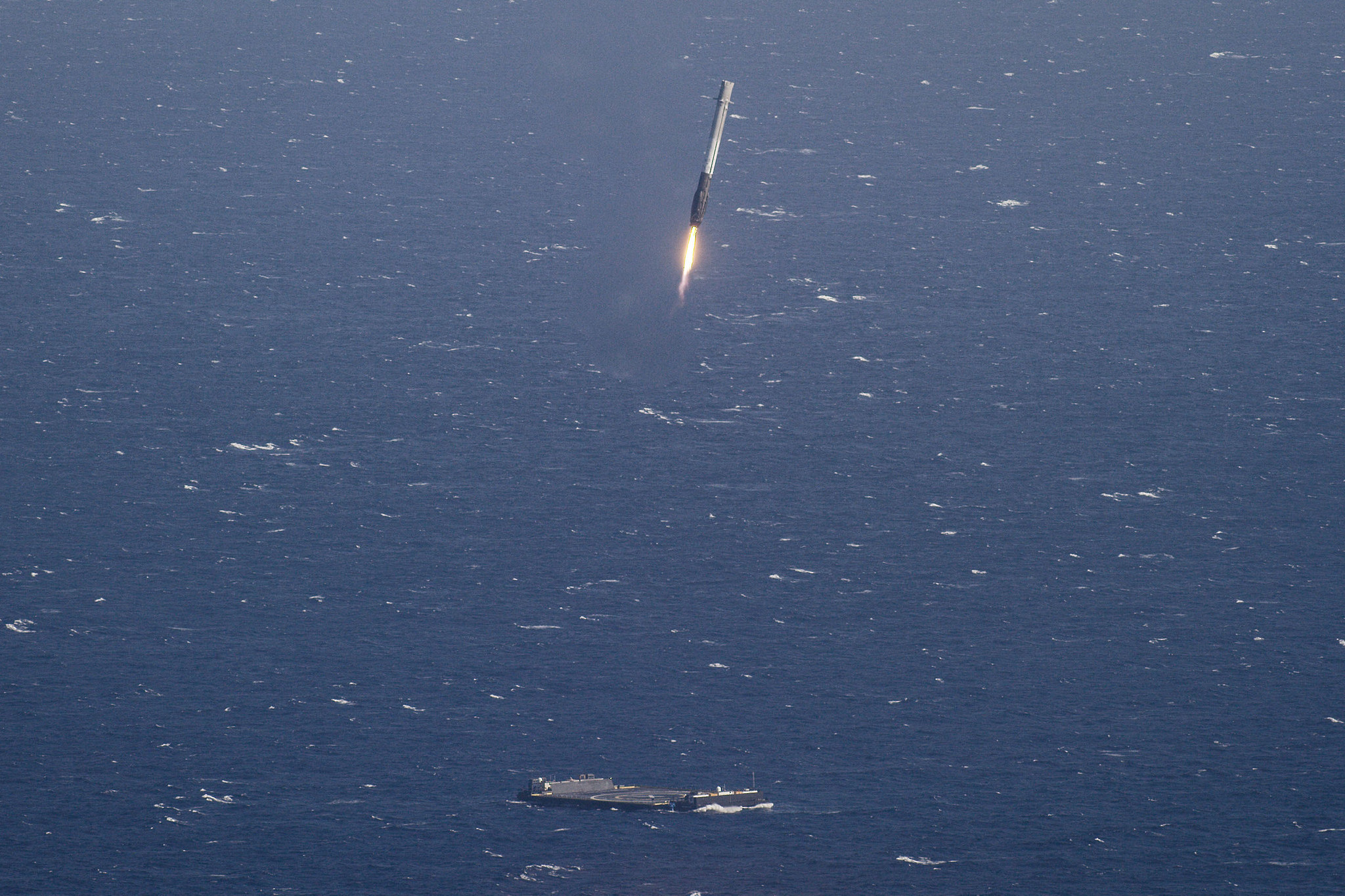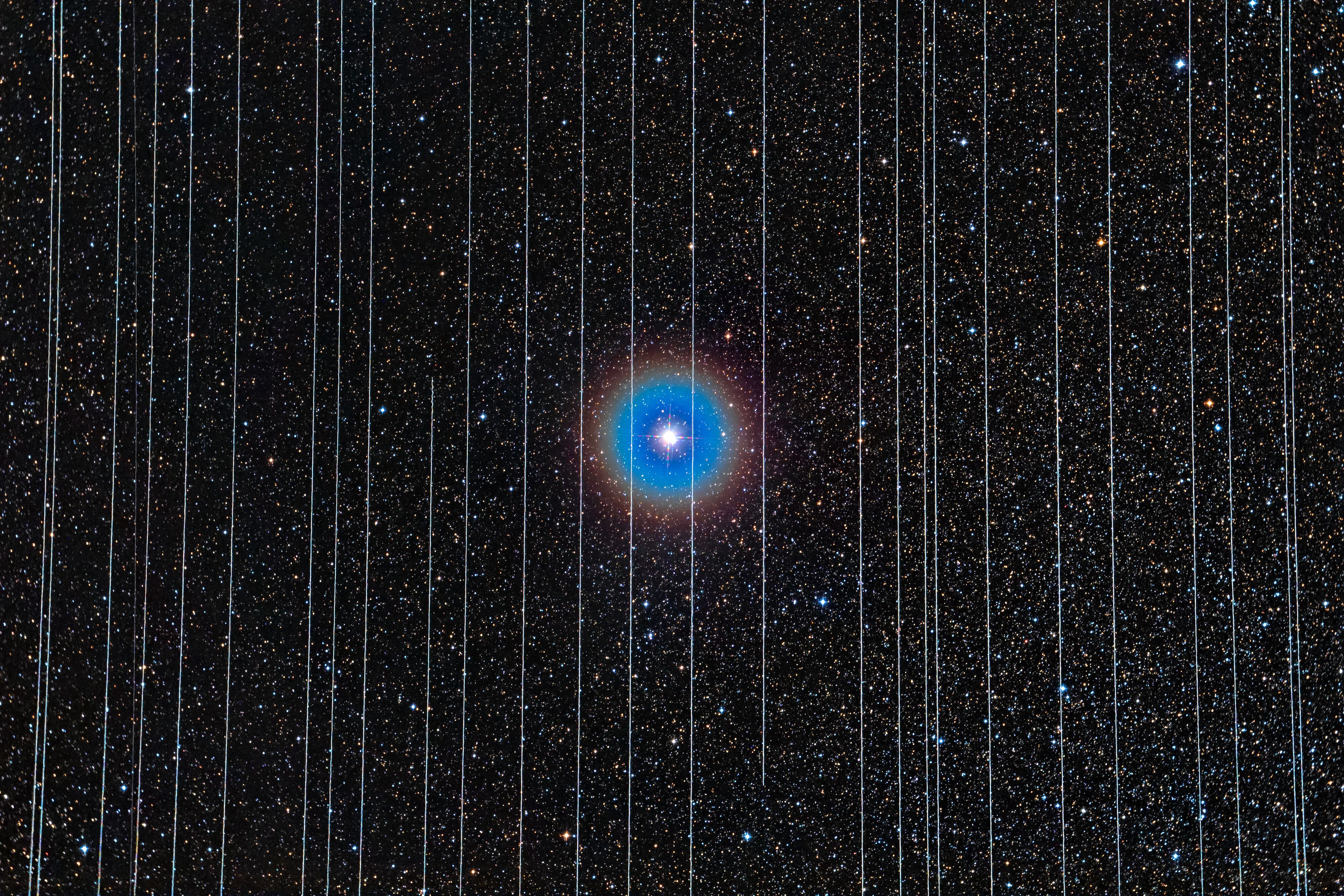SpaceX is an American spacecraft company. The company’s full name is Space Exploration Technologies Corporation. SpaceX designs, builds, and launches rockets and spacecraft. SpaceX gained worldwide attention in 2012, when it became the first company to send a privately owned spaceship to the International Space Station (ISS). The spaceship delivered cargo. Previously, only government-owned spacecraft had delivered cargo to the station. SpaceX has headquarters in Hawthorne, California, near Los Angeles.
SpaceX was founded in 2002 by the South African-born American entrepreneur (business developer) Elon Musk. Musk’s other enterprises have included the American electric car company Tesla Motors and the internet payment service PayPal. Musk’s stated goal is to revolutionize space technology to make it possible for people to live on other planets.
Transport service.
The United States National Aeronautics and Space Administration (NASA) awarded SpaceX a contract in 2008 to transport supplies to and from the International Space Station. In May 2012, the company’s uncrewed Dragon spacecraft flew a test mission to the station. During the test, astronauts aboard the station used a robotic arm to grab Dragon as it approached, and attach it to the orbiting space station. The astronauts exchanged fresh supplies carried by the Dragon craft for used materials and equipment. Then, the spacecraft returned safely to Earth. In October 2012, SpaceX launched its first official flight to the station.
Since 2012, SpaceX has carried out a series of space launches and transports to the ISS, including flying regular cargo resupply missions for NASA. The cargo has included food, clothing, water, computer hard drives, and other supplies for the space station crew. The returning craft has carried completed scientific experiments back to Earth. After shutting down its 30-year-old space shuttle program in 2011, NASA had partnered with Japan, Russia, and other governments to resupply the ISS. However, NASA has begun using privately owned spacecraft as a cheaper alternative to carry out such missions.

The Dragon capsule is designed to carry both cargo and people. The spacecraft’s crew compartment can accommodate up to seven people per flight. “Crew Dragon’s” first mission to the International Space Station launched in 2019 with no passengers. This uncrewed test flight confirmed SpaceX’s ability to safely and reliably fly astronauts to and from the ISS.
In 2020, Crew Dragon became the first private spacecraft ever to take astronauts into orbit when it carried two U.S. astronauts to the ISS. The mission also marked the first launch of human beings into space from U.S. soil since the space shuttle was retired in 2011. The astronauts of SpaceX’s Crew-1 spent 167 days on the ISS, breaking the record for longest mission in space by a crew carried on an American spacecraft. SpaceX missions to the ISS have carried astronauts from NASA, the Japan Aerospace Exploration Agency (JAXA), and the European Space Agency (ESA).
On Sept. 15, 2021, SpaceX launched its first space tourism mission. Space tourism is human space travel for enjoyment. The orbital mission, known as Inspiration4, was the first spaceflight with no professional astronauts on the crew. The four passengers were all civilians, and the trip was privately funded by one of the passengers. The passengers spent three days orbiting Earth, then landed safely on September 18.
Rockets.
SpaceX has stated that it aims to reduce the cost of space travel and make space travel more accessible through the use of reliable commercial spacecraft. Besides the Dragon spacecraft, the company’s vehicles include the Falcon 9 rocket and the extremely powerful Starship rocket.
The Falcon 9 has engines that slow its descent back to Earth and allow it to land upright. Falcon 9’s can be reused for later launches, which makes each launch much less expensive. In the 2010’s, SpaceX suffered two high-profile Falcon 9 failures, with one rocket exploding on the launch pad, and another breaking apart shortly after launch. However, the rocket has since proven a reliable launch vehicle, with hundreds of successful launches. In fact, it has one of the best reliability records of any rocket. 

SpaceX’s Starship rocket is the largest, most powerful rocket ever successfully launched, though it has so far been used only in test flights. It is 397 feet (121 meters) tall and weighs approximately 10 million pounds (4.5 million kilograms). SpaceX claims Starship will be fully reusable. NASA plans to use a modified version of Starship’s upper stage (section) on its Artemis 3 mission, which is expected to carry astronauts to the moon (see Artemis).
Starlink.
SpaceX also develops and manages Starlink, a network of satellites orbiting Earth. This network, developed in the 2010’s, has been designed to provide high-speed internet access to people around the globe. Thousands of Starlink satellites travel around Earth in a low-altitude orbit, closer to the planet’s surface than many other internet-providing satellites. SpaceX claims the network’s low orbit, as well as its large number of satellites, allow the company to provide faster internet connections. Today, more than half of all active satellites orbiting Earth belong to the Starlink network. SpaceX aims to eventually operate tens of thousands of Starlink satellites.
Scientists claim the Starlink network has become a major contributor to light pollution. Light pollution is an excess of light that produces harmful or disruptive effects. Satellites such as those in the Starlink network reflect sunlight, creating bright spots in the night sky. In astronomical images taken over a long exposure period, the bright spot becomes a streak that traces the satellite’s path across the sky. Such streaks reduce the quality of astronomical images. Reflected light from satellites also contributes to sky glow. Sky glow is an effect in which light from many individual sources combines to generally brighten the sky. Sky glow hides stars’ light in much the same way that the sunlit sky does during the day. 
